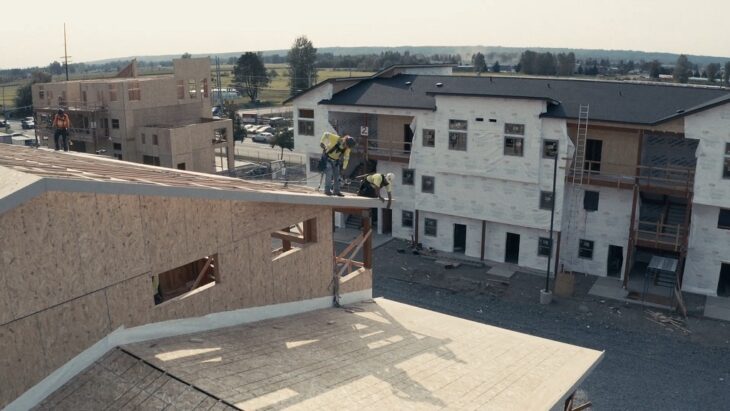Real estate in 2025 remains one of the most resilient and flexible investment vehicles despite ongoing economic volatility.
Investors are facing persistent challenges such as high interest rates and uncertain policy directions.
However, those who target specialized niches are seeing impressive returns.
Instead of focusing solely on prime locations, experienced investors are leaning into asset types and market segments that can outperform under different economic cycles.
Strategic positioning, data-driven decision-making, and niche awareness define success in today’s real estate market.
Table of Contents
Toggle1. Short-Term Rentals (STRs) and Vacation Properties

Short-term rentals remain one of the most profitable and adaptable real estate niches in 2025.
Increased global travel, the popularity of remote work, and the rise of digital nomads continue to fuel the demand for flexible accommodations.
These properties appeal to leisure travelers, business professionals, and families alike, creating consistent occupancy and impressive returns.
Cities such as Las Vegas, Tampa, and Austin stand out as prime destinations for investors.
Las Vegas offers year-round visitor traffic and world-class entertainment, while Tampa’s beaches and expanding job market attract both vacationers and long-term renters.
Austin’s blend of tech-driven growth and cultural energy makes it a magnet for travelers and professionals seeking flexible stays.
Success in the short-term rental niche depends heavily on optimization and adaptability. Investors must master Airbnb listing management, dynamic pricing, and local market research.
High-quality photography, personalized guest experiences, and automation tools such as smart locks and instant communication systems can significantly improve rankings and reviews.
Adherence to local regulations is also essential, as many cities are tightening rules on short-term rentals.
Seasonality, shifting regulations, and homeowners’ association restrictions can challenge profitability, but informed and flexible investors thrive regardless.
Many owners combine personal use with rental operations, turning properties into part-time vacation homes and income generators.
- High ROI Locations: Las Vegas, Tampa, Austin
- Success Tip: Automate guest communication and pricing adjustments to save time and maximize revenue.
2. Self-Storage and Mobile Home Parks (Recession-Resilient Assets)

Self-storage facilities and mobile home parks have earned a reputation for stability during economic uncertainty.
Both asset types serve essential needs: affordable housing and secure storage.
In 2025, these sectors continue to outperform due to demographic shifts, limited new supply, and consistent demand regardless of economic cycles.
Self-storage benefits from lifestyle transitions such as downsizing, divorce, relocation, and small business expansion.
Facilities with modern features like 24-hour access, security systems, and climate control attract long-term tenants with minimal upkeep.
Automation technology, such as online booking, payment portals, and remote monitoring, reduces operational costs and enhances customer satisfaction.
Mobile home parks, meanwhile, address the affordability crisis by providing accessible housing for lower-income families and retirees. Strict zoning laws prevent new developments, ensuring limited competition.
Investors can add value by purchasing under-managed parks, improving infrastructure, and infilling vacant pads to increase rental income.
- Emerging Regions: Suburban Southeast, Midwest towns
- Profit Tactics: Automation, market-rate rent adjustments, operational streamlining
Strict zoning laws prevent new developments, ensuring limited competition.
Investors can add value by purchasing under-managed parks, improving infrastructure, and infilling vacant pads to increase rental income.
Services like mobilehomebuyerfl streamline the process of acquiring or selling mobile homes in Florida, offering cash deals and reducing the friction typically found in traditional transactions.
3. Small Multifamily and House Hacking (2–4 Units)

Small multifamily properties, duplexes, triplexes, and fourplexes, are gaining immense popularity as accessible yet profitable investments.
Rising rents, ongoing housing shortages, and affordability challenges are pushing more tenants toward smaller, community-oriented housing.
The “house hacking” model amplifies the value proposition.
Over time, equity builds faster, and cash flow becomes more predictable. Investors using this strategy often access advantageous financing, such as FHA or VA loans, requiring minimal down payments while still benefiting from owner-occupied loan terms.
Markets such as Charlotte, Nashville, and Raleigh offer fertile ground for this strategy. Rapid population growth, strong job creation, and migration trends toward the Southeast contribute to sustained rental demand.
Operationally, small multifamily investments are easier to manage than larger complexes. Landlords can directly oversee maintenance and tenant relationships, keeping costs lower while maintaining control over quality and tenant selection.
- Best Markets: Charlotte, Nashville, Raleigh
- Strategy Tip: Secure financing with FHA loans to reduce down payments.
4. Value-Add Apartment Buildings (5–50 Units, Class B/C)

Value-add apartment buildings remain a cornerstone strategy for investors focused on forced appreciation and steady cash flow.
In an environment defined by a housing shortage and rising rents, these mid-tier properties offer significant potential for improvement and growth.
Typically falling in the Class B and C categories, these assets attract tenants seeking affordable, quality housing in desirable neighborhoods.
Investors enhance value through targeted renovations and operational efficiency.
Upgrading kitchens, bathrooms, and common areas can justify rent increases and boost property values.
Rebranding, improved management, and streamlined maintenance also raise net operating income (NOI). As NOI grows, refinancing or selling the property can unlock substantial equity gains.
Secondary cities such as Boise and the outskirts of Austin represent attractive investment zones.
Investors who focus on under-managed assets can acquire properties at favorable prices, reposition them efficiently, and generate superior returns.
- Key Strategies: Renovation, expense optimization, refinancing
- Target Markets: Boise, Austin suburbs, mid-tier metro areas
The value-add approach rewards creativity, attention to detail, and a hands-on approach to management, qualities that translate directly into higher returns.
5. Luxury and Lifestyle Properties

Luxury and lifestyle real estate continues to deliver strong returns for those who cater to high-net-worth individuals seeking comfort, exclusivity, and convenience.
Demand for premium properties remains high in 2025, especially in markets with favorable climates, natural amenities, and low taxes.
Investors benefit not only from appreciation but also from large commissions and consistent turnover in upscale communities.
Key segments include waterfront residences, golf course estates, and 55+ active adult housing.
Buyers in these categories prioritize design quality, security, and personalized experiences.
Locations such as Tampa Bay, Lake Tahoe, and the coastal Carolinas remain prime investment areas due to their resort environments, vibrant tourism economies, and strong demand from retirees and second-home buyers.
Success in this niche requires professional branding and marketing. High-end photography, virtual tours, and exclusive client events build trust and attract serious buyers.
Networking with wealth managers, relocation specialists, and luxury brokers helps generate valuable referrals.
- Top Markets: Tampa Bay, Lake Tahoe, coastal Carolinas
- Investor Tip: Build strong referral networks and invest in professional marketing.
6. New Construction & Developer-Backed Investment

New construction properties are reshaping real estate investment strategies for 2025.
With older housing stock requiring costly repairs, new builds offer an attractive alternative that combines modern design with long-term stability.
Investors gain access to builder incentives such as mortgage rate buydowns, upgrade packages, and closing cost contributions, benefits that enhance returns and reduce risk.
Pre-construction purchases can be particularly lucrative, allowing investors to lock in lower prices before completion and benefit from property appreciation once construction finishes.
New builds also require less maintenance, reducing ongoing expenses while appealing to both buyers and renters seeking contemporary, energy-efficient homes.
Targeting active adult communities, single-family developments, and suburban growth zones in Dallas/Fort Worth, Charlotte, and Austin delivers strong opportunities.
- Top Cities: Dallas/Fort Worth, Charlotte, Austin
- Investor Edge: Modern features and resale flexibility enhance long-term profitability.
Modern amenities such as smart home integration and sustainable building materials further increase property desirability.
Summary
Real estate success in 2025 relies on specialization, adaptability, and a diversified approach.
The highest returns come from investors who look past traditional single-family rentals and embrace a range of opportunities.
Profitable strategies include diversification across property types like short-term rentals, self-storage, and apartments, as well as targeting specific renter profiles such as travelers, retirees, and value-seekers.


